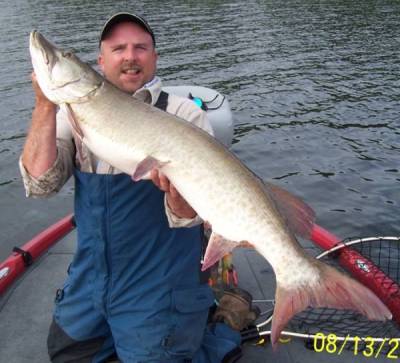|
|
Posts: 785
| I know the guys here that been fishing for over twenty years remember the Acid Rain scare that was occurring about 20-25 years ago. What ever happened to this topic? I know I'm dating myself but does anybody here still use a PH meter? If I recall, the meter measured the alkalinity of the water. Does a musky have a prefered alkalinity level? No, I don't use the meter. Never saw one. If I'm not mistaken, was'nt Ike Walton lake a casualty of Acid Rain? Or, was this topic just overhyped back then? Kdawg | |
| | |
Posts: 154
Location: Appleton, WI | Not overhyped at all. Go and fish in the adirondacks of NY. Most of the lakes have lost their brook trout fishery due to the rain. What was eventually found out was the acid rain leached aluminum from the soil into the water and the fry of the trout could not survive. Most of the lakes are now warmwater fisheries smallmouth and such. I really have not seen an info on how this affected muskie fisheries. Did take my largest brookie on a lake while smallmouth fishing with fly gear in the fall, 22.5" in spawning colors. Still the most beautiful fish I have ever seen, released that one too. | |
| | |

Posts: 1189
Location: Bagley,MN 56621 | I dont know much about it, but can say that back in the day as a fertilizer salesman (alfalfa topdress in this case, but other crops as well) that a lot more sulfur has been used due to deficiencies in the soil that are now prevelant due to less acid rainfall. At least that was the reason coop. extension service was stating.
point is I think it is better, but how much and to the extent I dont know. | |
| | |
Posts: 178
| The acidic strength of "acid rain" has been declining in recent years in many parts of North America, thanks to Clean Air Act reductions in sulfur dioxide emissions from coal-fired power plants. Sulfur dioxide spewed into the atmosphere reacts with water vapor to form a weak solution of sulfuric acid. If that "acid rain" (rain with an elevated concentration of positively-charged hydrogen ions) falls onto a lake (or the watershed of a lake) that has low "alkalinity" (acid-buffering capacity, predominately associated with the total concentration of negatively-charged bicarbonate ions that have been dissociated from calcium or magnesium), the pH in the lake can be reduced to the point of causing many problems for aquatic life.
In the Upper Chippewa Basin of Wisconsin, I am not aware of any lakes that have received enough rain of sufficient acidity to overwhelm the buffering capacity and cause direct problems for sport fish. Acid rain has, however, had an indirect effect on the contamination of muskellunge and other fish with methyl mercury (a human neurotoxin). In organically enriched (high carbon content) sediments low in oxygen (such as occur in wetlands), decades of acid rain high in sulfate has created an ideal environment for the "methylation" of mercury -- another element carried long distances on the winds from coal-fired power plants. Methylation is the process by which a "methyl" group (each consisting of one atom of carbon and three atoms of hydrogen) is chemically combined with another compound or atom, such as elemental mercury. Certain species of bacteria that thrive in wetlands and lake-bottom sediments high in carbon, high in sulfate, and low in oxygen are responsible for this chemical transformation. The methylated form of mercury is readily absorbed by algae in the overlying water and is then bio-magnified in the food chain via zooplankton, plankton-eating fish, and finally fish-eating fish (piscivores). Methyl mercury stored in the muscle tissue of piscivorous fish can accumulate to levels of concern for consumption, particularly for children and pregnant women. The older the fish, and the more it depends on other fish as food (such as muskellunge), the more methyl mercury it is likely to contain.
Long story short, acid rain is declining, but the accumulated deposits of sulfate and elemental mercury associated with acid rain has turned our wetlands and our organically enriched (mucky) lake bottoms into bacterial methyl mercury factories that cause us to watch what we eat, and how much.
Dave Neuswanger
Fisheries Team Leader, Upper Chippewa Basin
Wisconsin DNR, Hayward
Edited by Dave N 5/7/2007 6:27 AM
| |
| |
|
 Acid Rain
Acid Rain Acid Rain
Acid Rain